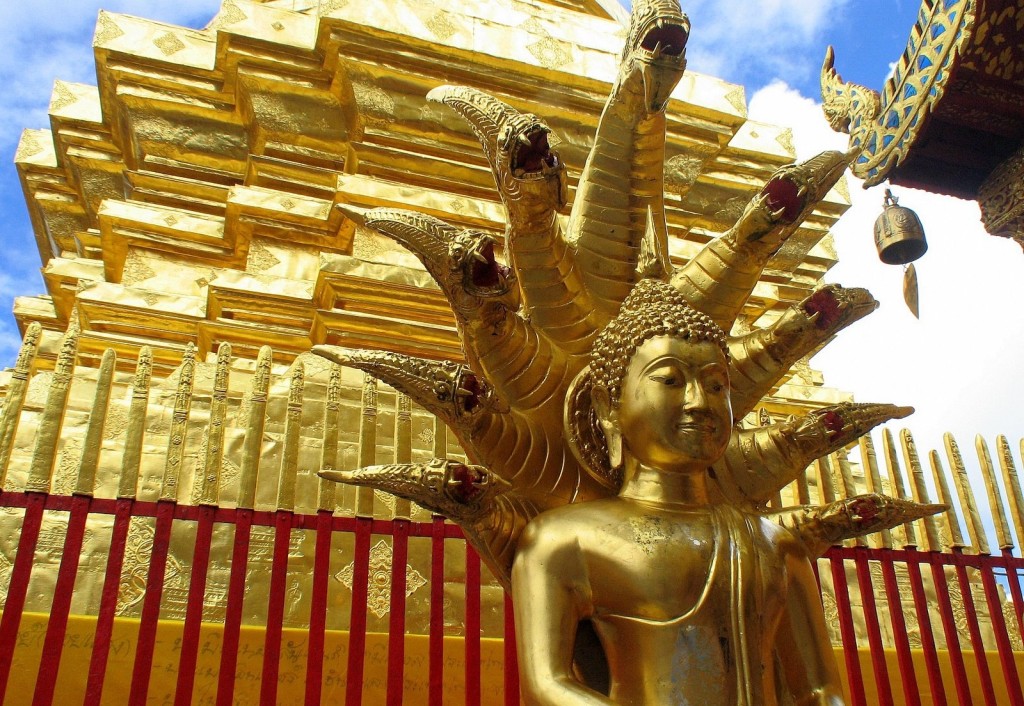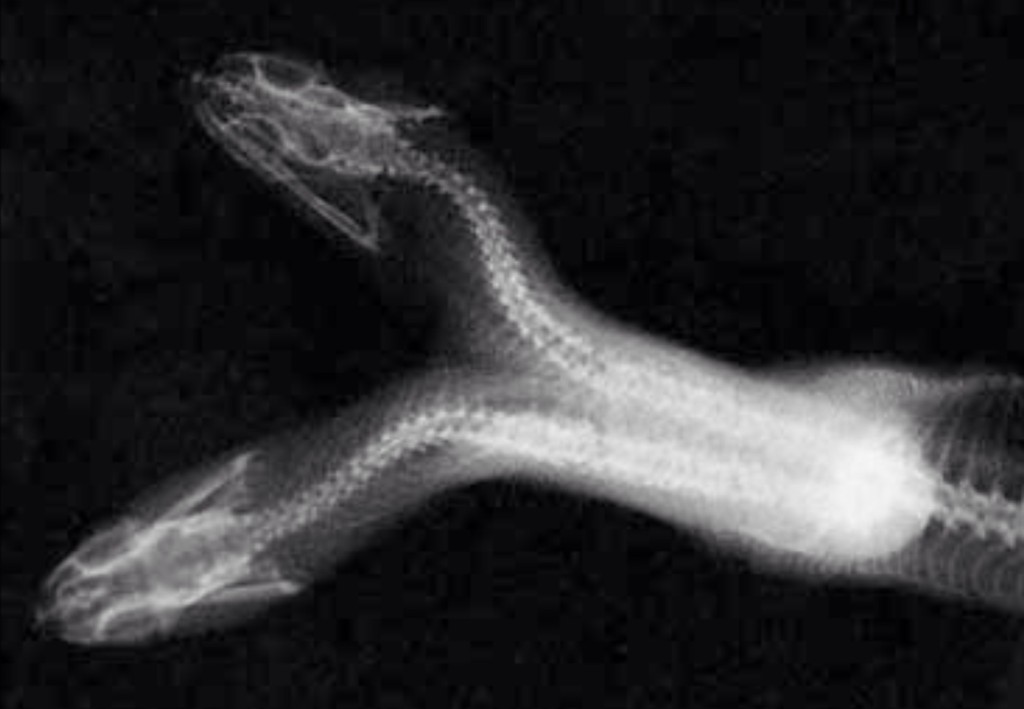Images of a seven headed snake, supposedly taken in India, have recently been making the rounds on the internet — while the images certainly do appear to be rather poorly done photoshops, perhaps there’s some truth to them? Which is it — are they real or fake?
The article below examines this question, as well as providing information on the rather common symbol (or meme) of the seven headed snake — a symbol which features in the stories of quite a large number of religions and oral histories (as well as going viral on the internet apparently).
The first and most obvious thing to point out about the photo is that the seven heads are very clearly the same exact image… simply cut and pasted multiple times over… It would perhaps seem surprising that such a poorly done photoshop could fool so many people, but then nobody who has spent much time on the internet should really be that surprised anymore about some of the things that people are willing to believe… Other things to note are the sharp edges surrounding the snake’s heads, and the lighting on the heads — which is completely wrong,
Now that that is out of the way, on to the fun stuff. (Like the somewhat surprising origin of the unicorn legend.) 🙂
The most common form of the viral image includes this caption: “GOD SAVE US. THIS SNAKE WAS FOUND IN THE MOUNTAINS OF HONDURAS. AND THE BIBLE SPEAKS OF A SNAKE WITH 7 HEADS AND WITH THIS WE SEE THAT IT IS FULFILLING EVERYTHING THAT IS WRITTEN. LORD HAVE MERCY ON OUR SOUL’S.”
There’s actually a bit of truth to this caption — the Bible (New Testament) does indeed mention a seven headed serpent or dragon. In Revelations 12:3 there’s this quote: “And there appeared another wonder in heaven; and behold a great red serpent (dragon), having seven heads and ten horns, and seven crowns upon his heads.” (That quote of course can be interpreted in a number of different ways — many of which have nothing to do with the intent of the author of the viral image caption quoted previously.)
Seven headed serpents also actually figure prominently into much of the artwork of ancient Buddhism — the Buddha has often been depicted as being shadowed by a seven headed serpent or “Naga” (a type of deity that can take the form of a great snake).
With regard to that depiction, the tale recounted below comes to mind: “Among the notable nāgas of Buddhist tradition is Mucalinda, protector of the Buddha. In the Vinaya Sutra (I, 3) the Buddha shortly after his enlightenment is meditating in a forest when a great storm arises, but graciously Naga King Mucalinda gives shelter to the Buddha from the storm by covering the Buddha’s head with his 7 snake heads. Then the king takes the form of a young Brahmin and renders the Buddha homage.”
Many headed serpents also figure prominently into many of the (very old) stories of Hinduism, as well as many of the other oral histories of South Asia. In particular the stories about Shesha come to mind:
“Shesha is generally depicted with a massive form that floats coiled in space, or on the ocean of milk (Milky Way), to form the bed on which Vishnu lies. Sometimes he is shown as five-headed or seven-headed, but more commonly as a many thousand-headed serpent, sometimes with each head wearing an ornate crown. His name means ‘that which remains’, from the Sanskrit root śiṣ, because when the world is destroyed at the end of the kalpa, Shesha remains as he is.”
“He is sometimes referred to as Ananta Shesha which translates as endless-Shesha or as Adishesha which means the first Shesha. It is said that when Adishesa uncoils, time moves forward and creation takes place. When he coils back, the universe ceases to exist. ‘Shesha‘ in Sanskrit texts, especially those relating to mathematical calculation, also implies the ‘remainder’ – that which remains when all else ceases to exist.”
“Shesha is also depicted as floating in the ocean of the changing world, forming the bed of Maha Vishnu. He is also known as Adishesha (the foremost of snakes) because of this and Anantashesha or simply Ananta (endless, as he is known to remain in existence even after the end of the Kalpa, when the whole universe is destroyed).”
There are also a number of European and Near-East myths that make mention of serpents with multiple heads — such as the infamous “hydra”.
On the more mundane level — snakes born with multiple heads are actually not all that rare. They do tend to not live that long though. There have certainly been exceptions in that regard though — some of which have lived for multiple decades while in captivity.
Image Credits: Public Domain; Buddha Snakes via Wikimedia CC





HOAX
HOAX
HOAX
HOAX
69 Heads. The Real Number shoud be 69 Heads
HOAX
HOAX
HOAX
HOAX
69 Heads. The Real Number shoud be 69 Heads